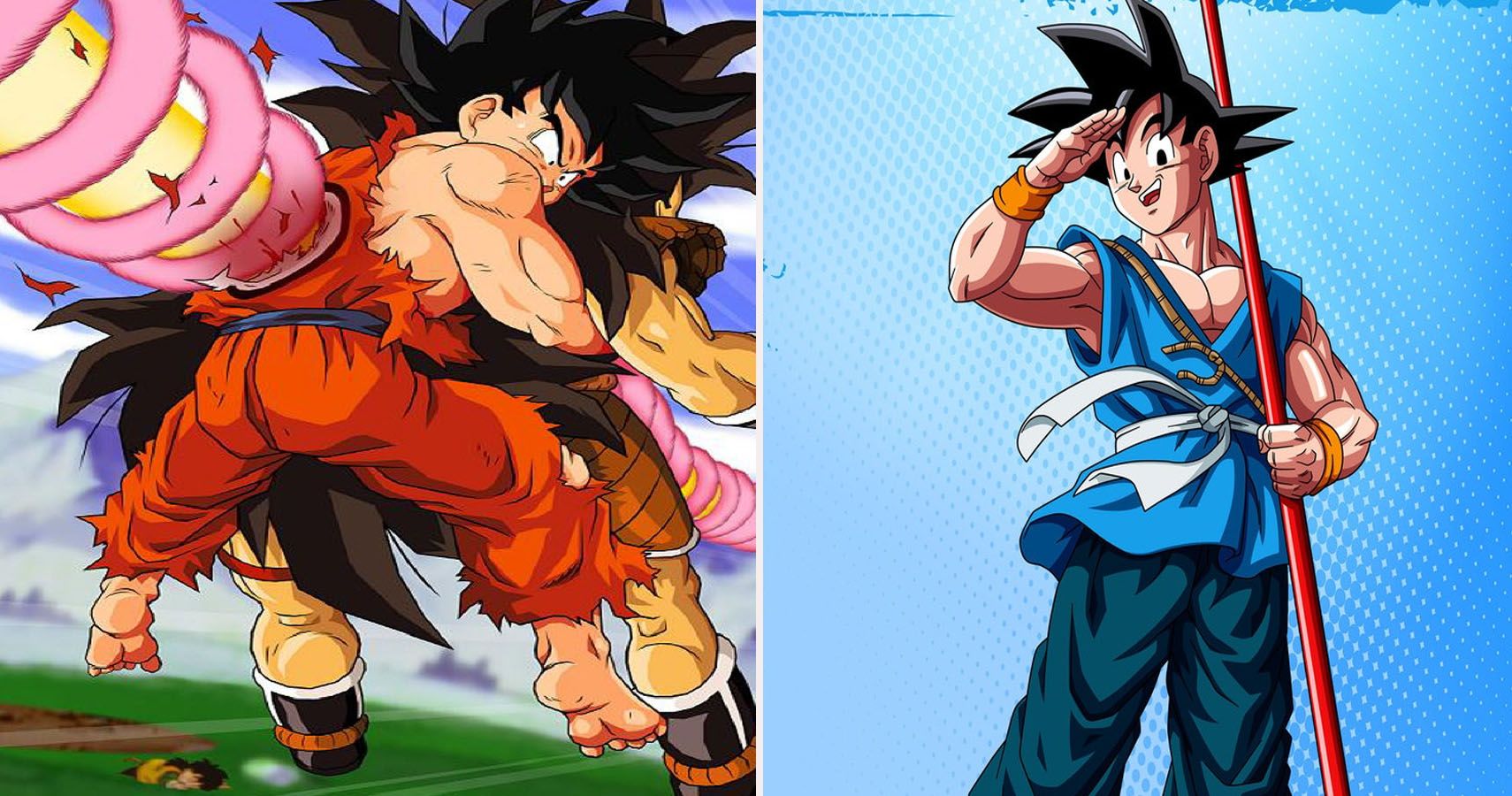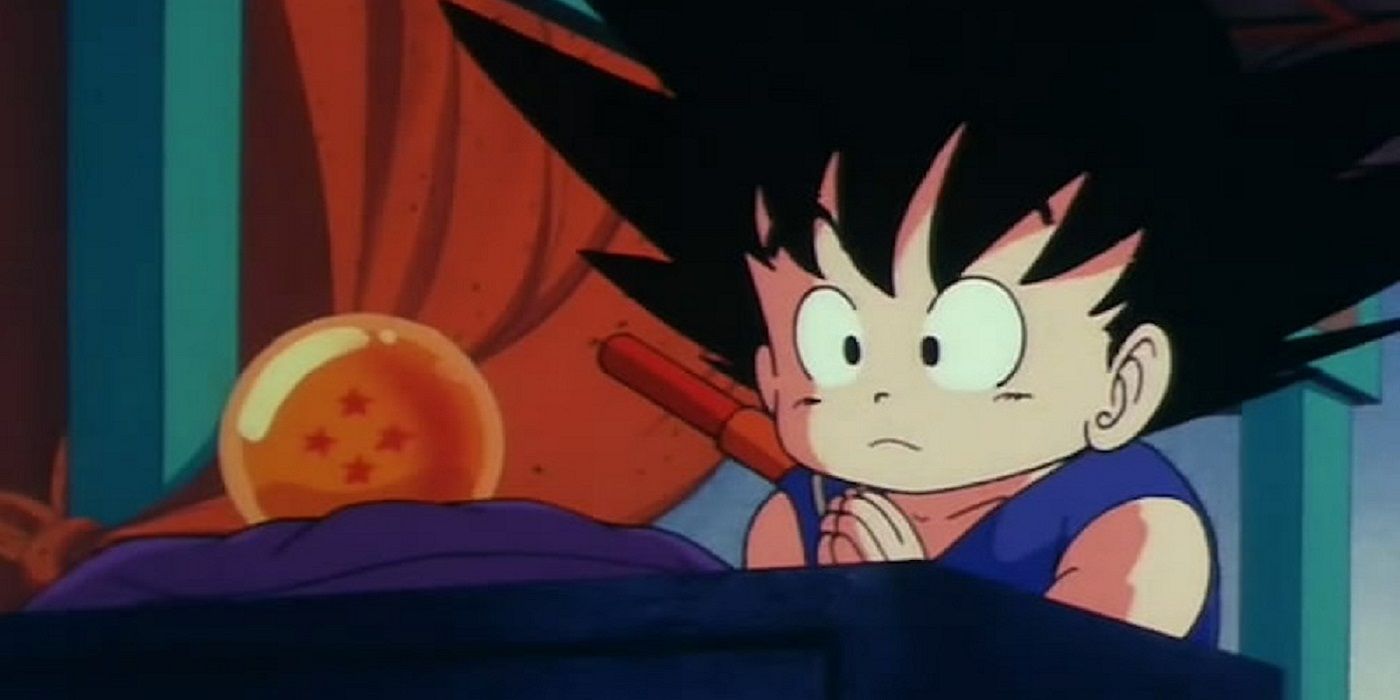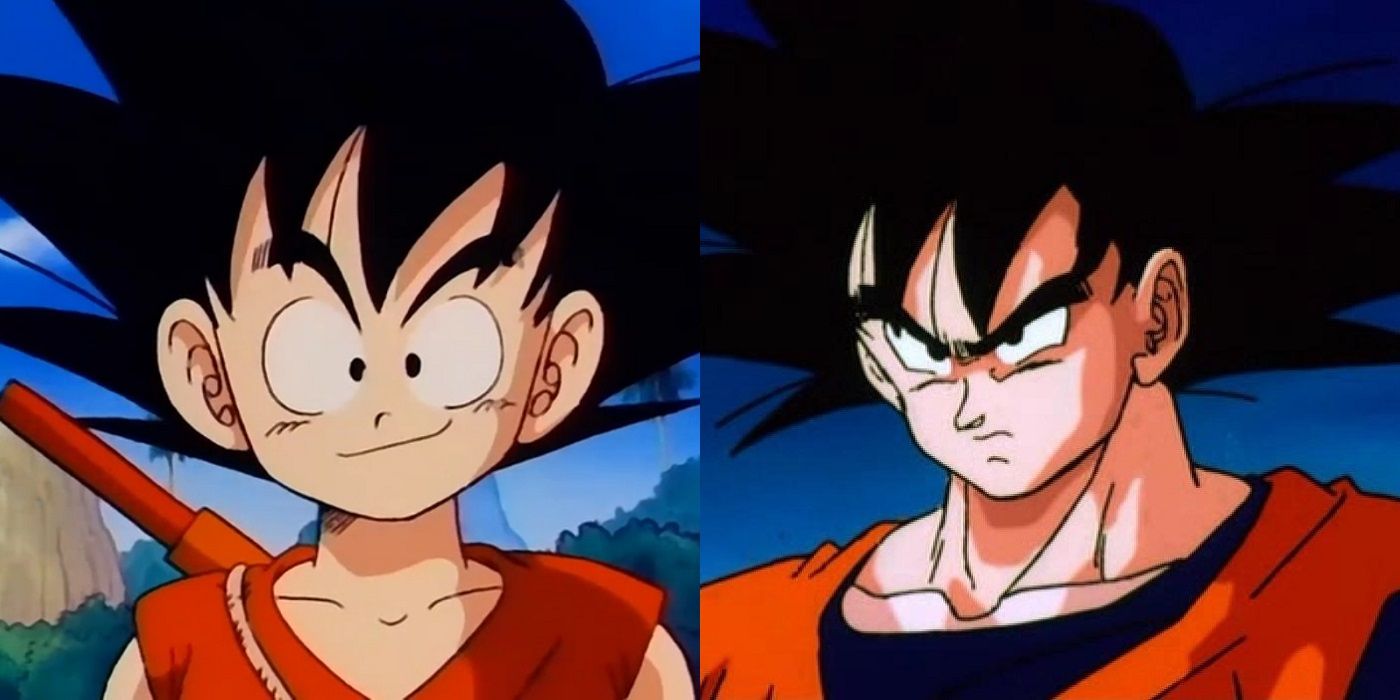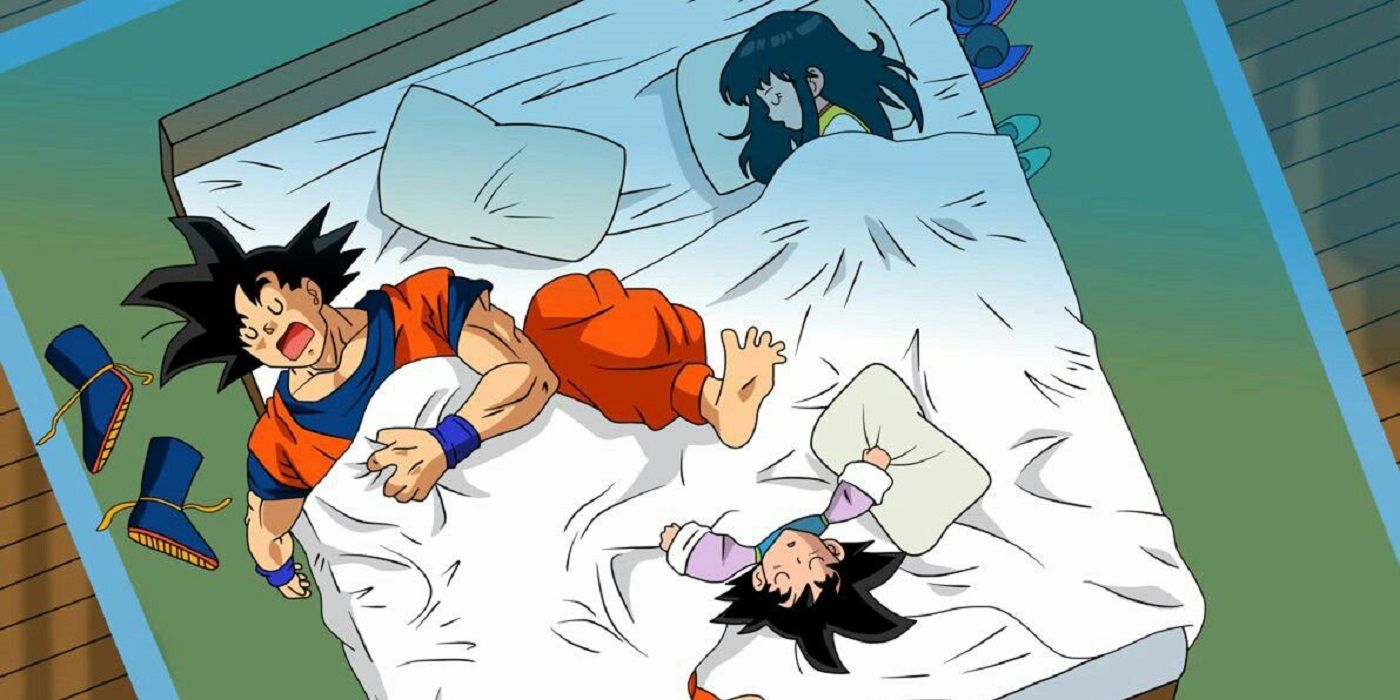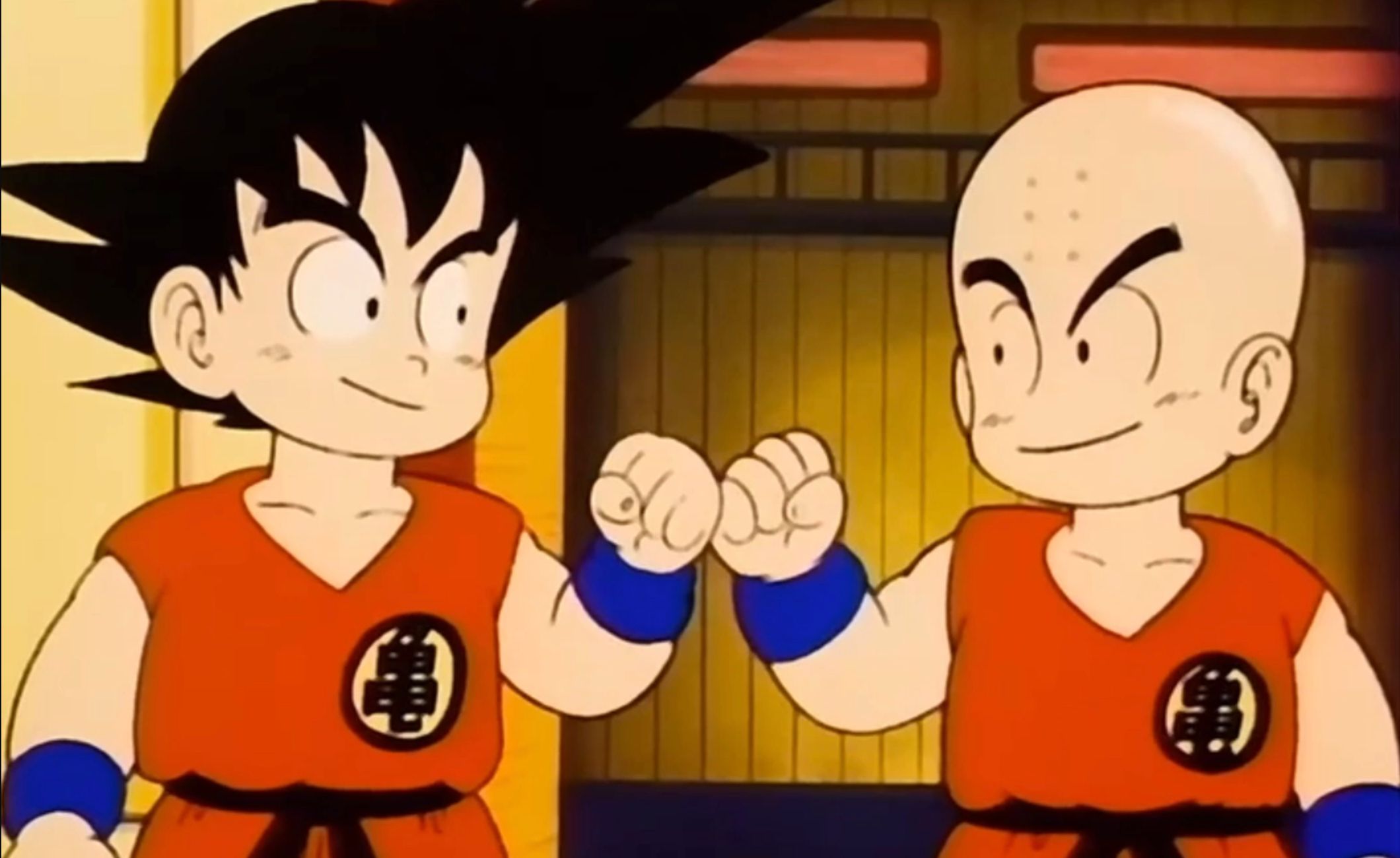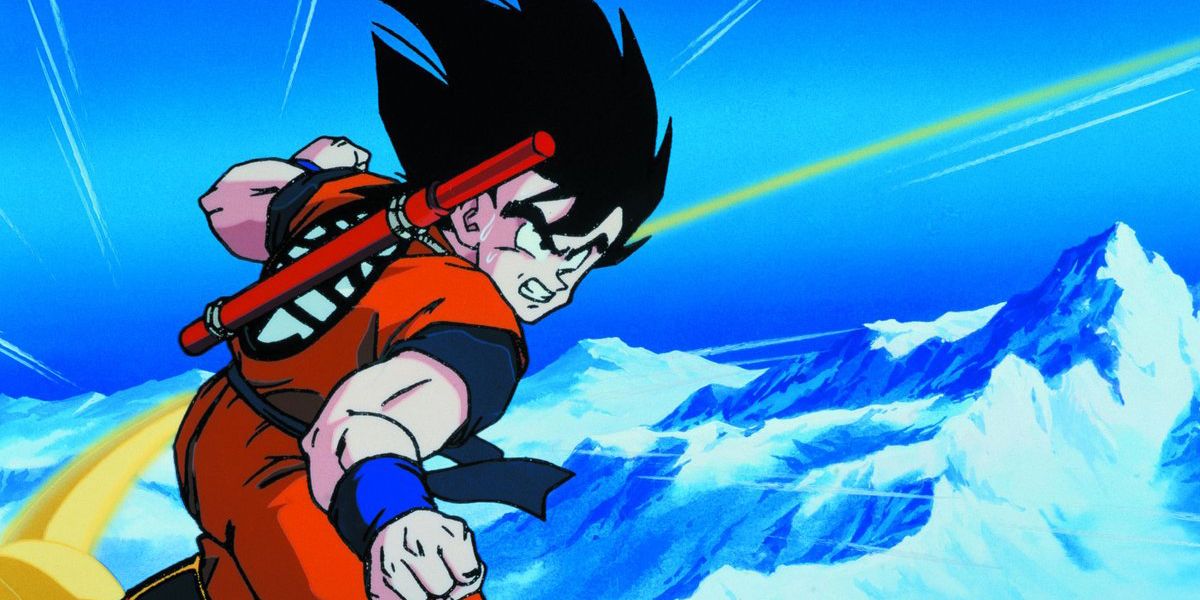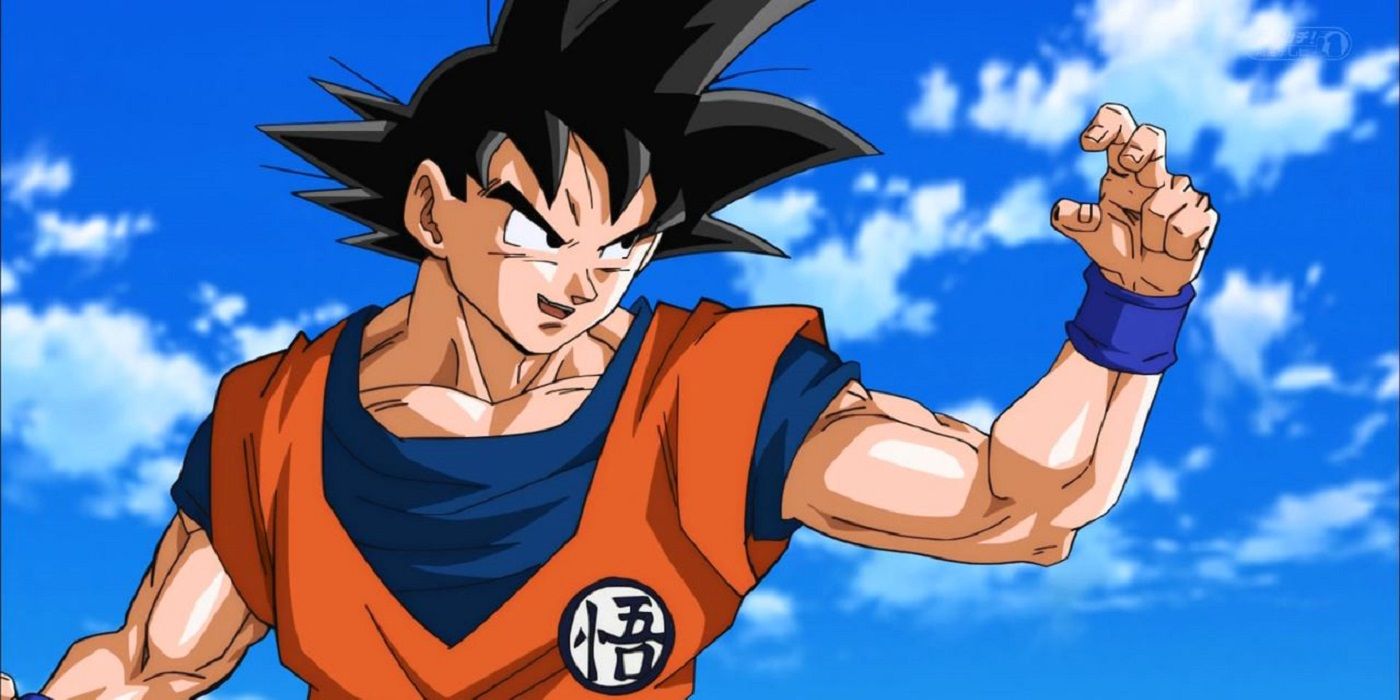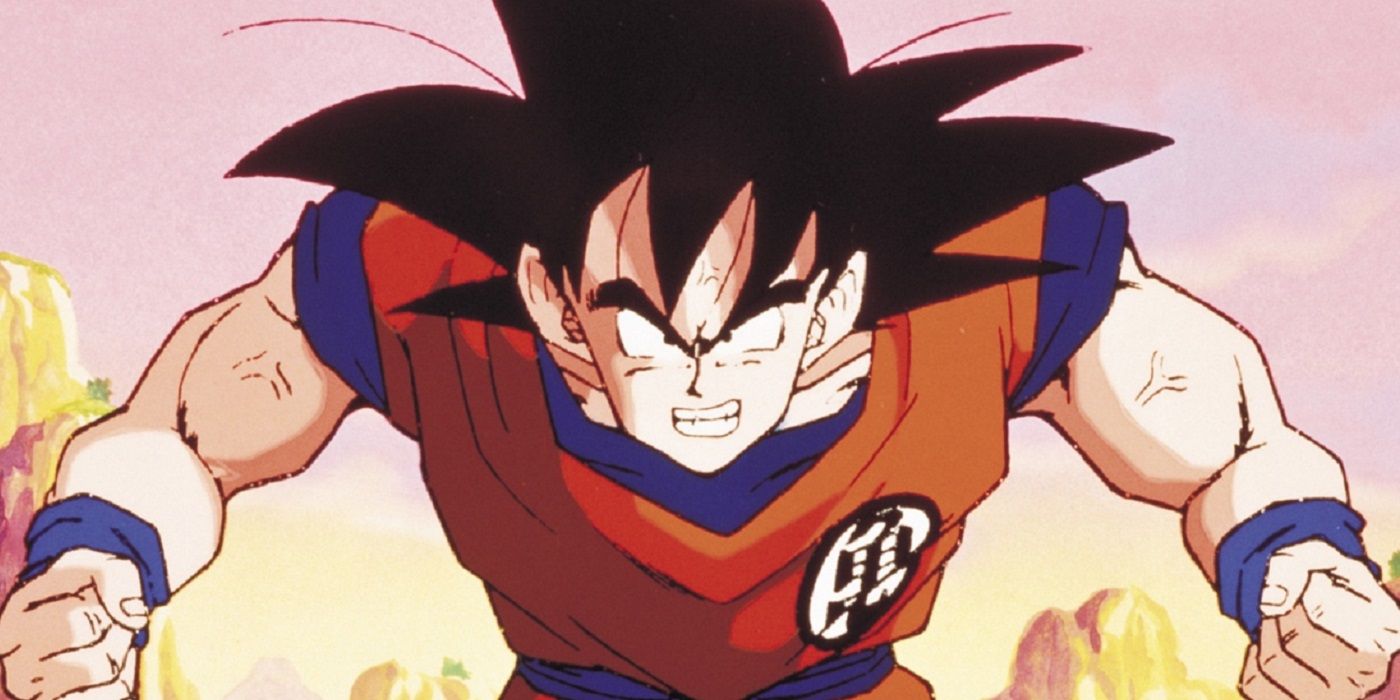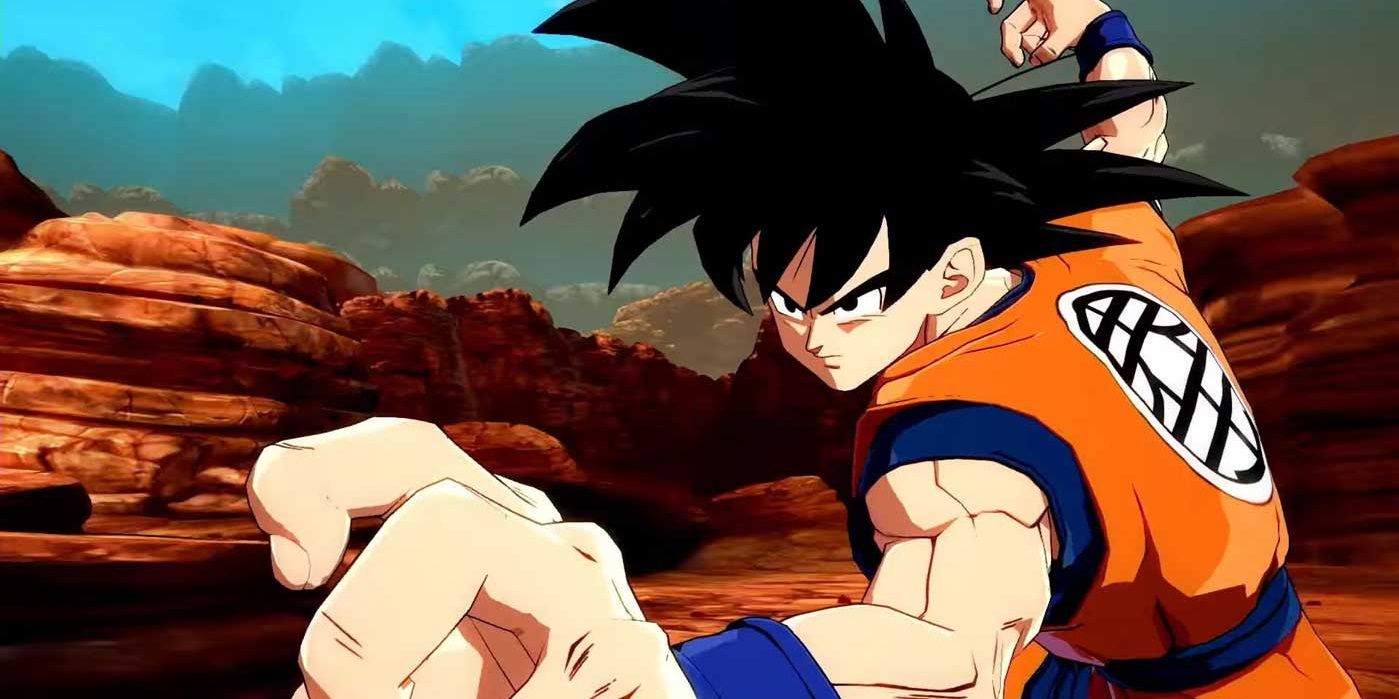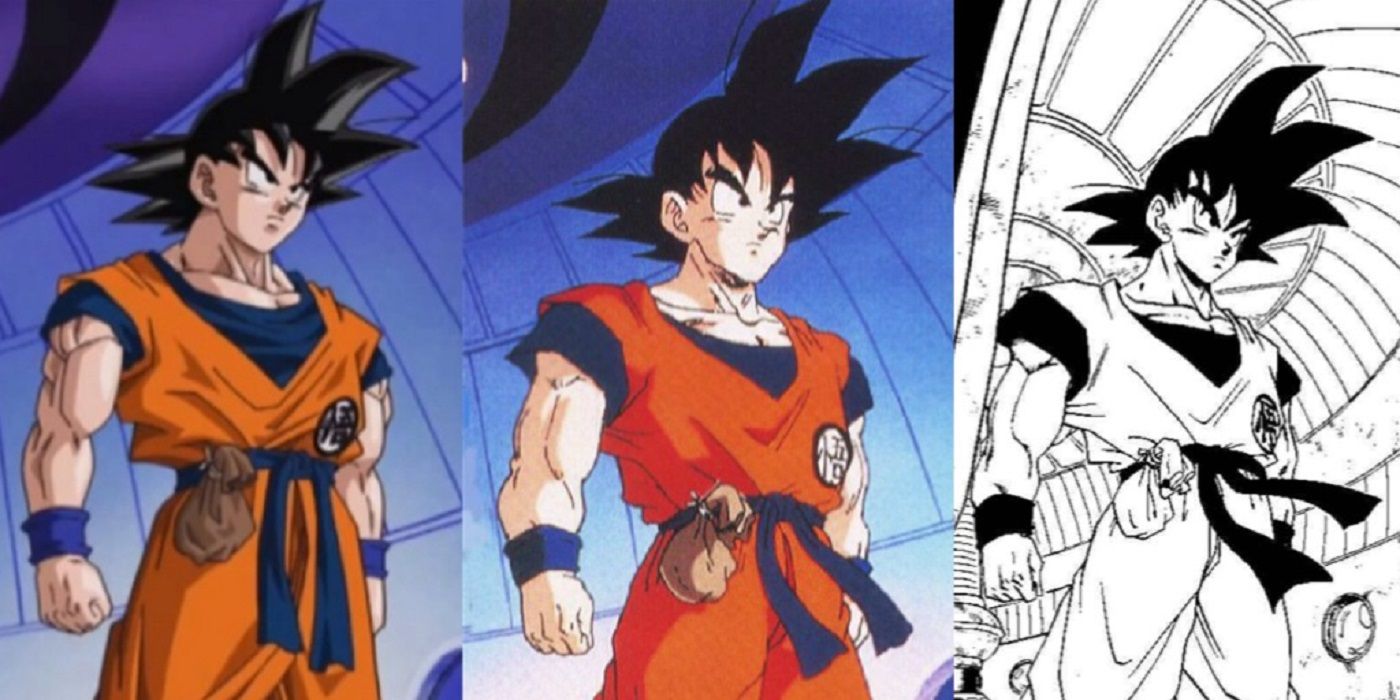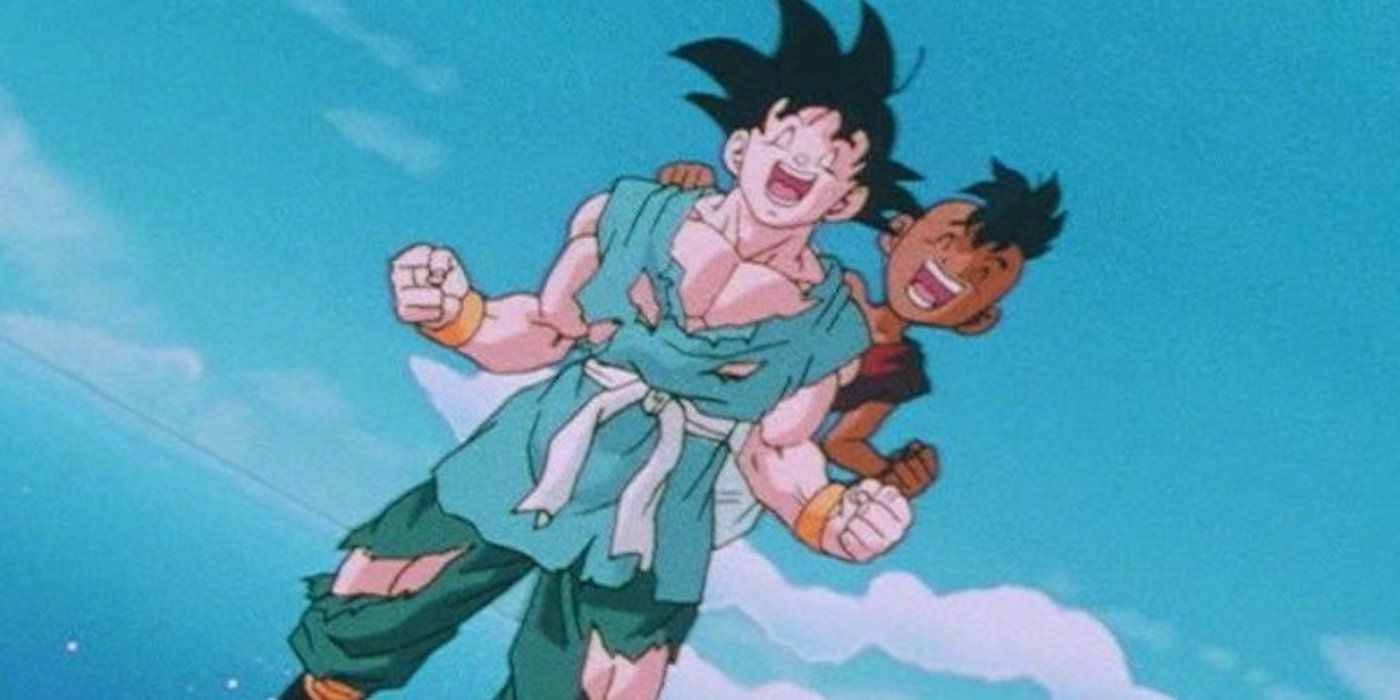Son Goku’s signature orange gi is synonymous with Dragon Ball. His look is one of the most iconic in the entire medium, influencing shonen protagonist character design for decades to come. What’s more, Goku’s most influential outfit wasn’t even his first. His trademark gi is one that Goku doesn’t get until roughly halfway through the second story arc.
From there, he dons it right up until the end of the series. Goku’s gi isn’t just a piece of clothing, though, it actually has unique physical properties within the series while also representing where Goku is as a character in the context of his development. Clothes make the man, indeed.
His Original Gi Isn’t Blue In The Manga
Goku kicking off the series with a blue gi has always been one of the more charming elements to come out of the early series. Toriyama is clearly still trying to solidify Dragon Ball as a manga which means he had yet to stumble upon its most iconic fixtures until later. Interestingly, Goku actually doesn’t wear a blue gi in the manga.
Not only does he start the series with a purple gi instead, he gets rid of it after the first chapter in favor of a light orange gi. Toriyama may have stumbled into the series’ defining features, but Goku was almost always associated with orange.
Goku Ruins Four Turtle School Uniforms In The Original Series
Goku just can’t seem to keep his clothes on as a kid. Throughout the first three story arcs, Goku manages to go through precisely three turtle school uniforms. The first of which he ends up tearing to shreds when he turns into an Oozaru during the 21st Tenkaichi Budokai.
The second uniform he wears is actually Kuririn’s, but it gets replaced before the Baba tournament before being burned by Pilaf. His last turtle school uniform is gifted to him by Master Roshi and he manages to wear it all the way up until he trains with Kami. By that point, though, it’s on its last legs.
Goku Sleeps In His Weighted Gear
Goku’s always been a bit of an odd guy, but sleeping in weighted gear may be pushing things. In the original series, it’s only during the 23rd Tenkaichi Budokai where Goku keeps his weighted undershirt on and only in the anime at that. In Super, however, he has no qualms just hopping into bed, weighed down by his gear.
In every other instance in the series where Goku sleeps, he’s typically shirtless and in his briefs. Given how iconic Goku’s look became by the time Super rolled around, though, it’s likely Toei just wanted to keep Goku’s image intact at all times. Whether it makes sense or not.
Kid Goku’s Gi Is Only Red In The Anime
One of the more subtle changes from Dragon Ball to Dragon Ball Z is the shift in color palette, particularly in regards to the turtle school uniform. In Dragon Ball, Goku’s gi is fairly reddish. It has orange influences, but more often than not, it skews red. In Dragon Ball Z, it’s undeniably orange.
Interestingly, both approaches are actually wrong. In the manga, Goku’s turtle school gi is yellow-orange for the entire series. The red uniform was a Toei mandated coloring that was shaken up once the series transitioned into the Z-era. While DBZ emphasizes the orange better, it goes too far in subduing the yellow.
It’s Ki Resistant
Easily one of the coolest and under discussed elements of Goku’s gi is the fact that it’s Ki resistant. Specifically, it’s only Ki resistant after Goku trains with Kaio. Upon finishing his training with the Lord of Worlds, Kaio bestows upon Goku a brand new uniform, one that’s far more durable than his standard turtle school gi.
Specifically, the gi won’t break down so easily from ki attacks, preserving Goku’s clothes and even offering some minor protection. Of course, Goku’s fight with Vegeta ends up being so intense that the gi does end up totally mangled, but that’s to be expected when fighting the Prince of all Saiyans.
Goku Owns A Total Of Eleven Turtle School Uniforms
It might seem like Goku doesn’t rotate his wardrobe often enough, but he actually owns a total of eleven different turtle school uniforms over the course of the series. He gets his first gi from Roshi; Kuririn gifts him his second; he gets the third one tailored at the end of the Red Ribbon Army arc; and his fourth one is given to him before the 22nd Tenkaichi Budokai.
His fifth is the one he has tailored for the 23rd Tenkaichi Budokai; his sixth is given to him by Kaio for the fight against Vegeta; his seventh is another Kaio-gifted gi, this time for Namek; his eight is yet another Kaio gi that he saved in the event he ruined his gi training for Namek; his ninth is his Cell and Boo arc gi; his tenth is the gi he wears for most of Super; and his eleventh is the gi he wears in Broly.
Understanding The Turtle School Kanji
Goku’s kanji isn’t just for show. Each symbol serves a distinct purpose in underlying where Goku is as a martial artist. Under his first master, Goku wears the turtle school kanji with pride. It isn’t until he lands on Namek that he fully ditches his master’s symbol. While repping the turtle school kanji, Goku formally represents Master Roshi and his ideals.
Specifically, the turtle school philosophy of pushing oneself, accepting that someone will always be stronger, and living a good life. Goku eats well, sleeps well, plays well, and fights well. It’s representing Roshi where Goku is at his purest.
Understand Kaio’s Kanji
Despite asking Kaio to make him a new gi with the turtle kanji intact, the Lord of Worlds opts to add his own flair to Goku’s back kanji. Representing Master Roshi on the front and Kaio on the back, Goku’s late Saiyan arc gi perfectly matches the identity crisis he has during the Saiyan arc, one that keeps him unsure of who he truly is: an Earthling or a Saiyan.
Through his fight with Vegeta, audiences get to watch Goku ideologically oppose Vegeta. Both are Saiyans, but nurture has turned Goku into a martial artist whereas nature has turned Vegeta into a monster. At the end of the day, Kaio’s kanji represents how Goku allows himself to be influenced by those around him.
Understanding Goku’s Personal Kanji
Upon arriving on Namek, Goku dons the turtle school gi with kanji one last time (in Dragon Ball Z, that is.) Rather than representing Master Roshi or Kaio, Goku’s kanji proudly reads “Go” for “Goku.” Having trained under Roshi, Karin, Kami, and Kaio, Goku has come into his own as a genuine martial artist.
More importantly, it’s during this arc where Goku firmly accepts who he is: a Saiyan from Earth. In that respect, it’s incredibly important that he be wearing his own personal kanji during the events on Namek. It not only hints at his resolve, but ties into his greater character arc visually.
Goku Stops Wearing His Signature Gi When He’s Become A Martial Arts Master
The idea that Goku doesn’t develop over the course of Dragon Ball is a rather silly one, especially since his clothes tell quite the story. Nothing caps off his arc more than his appearance at the end of Z. After coming into his own and settling into old age, Goku no longer wears his signature gi.
Instead, he wears a basic dogi. It’s in this outfit that he not only meets Oob, but decides to train him, passing on everything he’s learned over the course of the series. It’s only when Goku becomes a proper martial master in his own right that he abandons his orange look entirely, moving towards the future.

